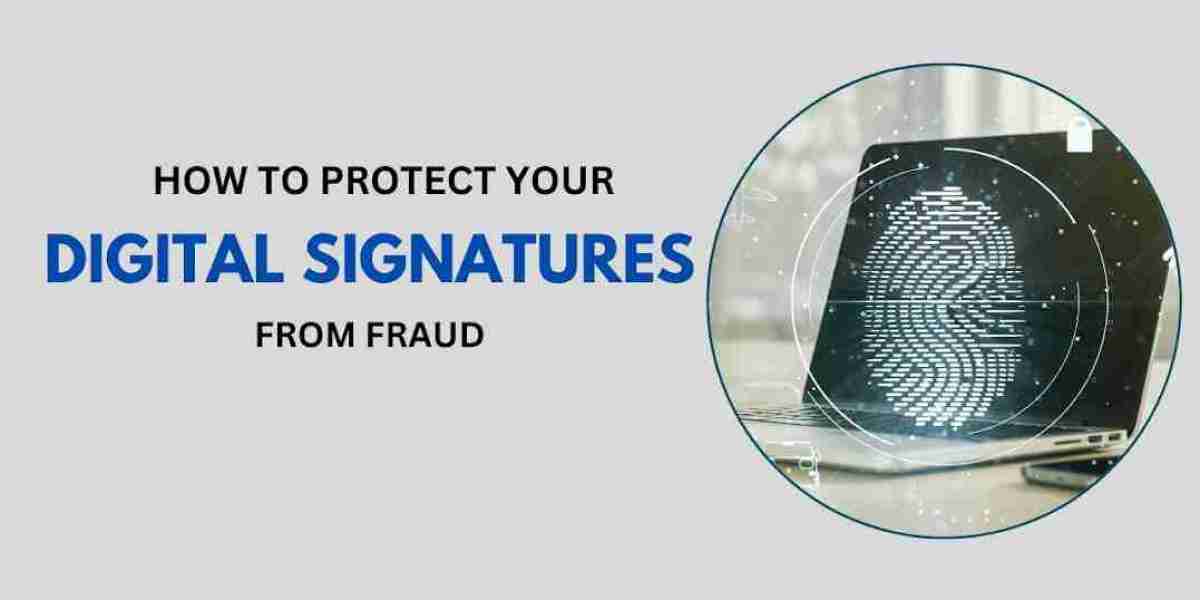Digital signatures are an essential tool for secure online transactions. They help verify identities, ensure the authenticity of documents, and make digital agreements legally valid. However, as technology advances, so do cyber threats. Digital signature fraud is a growing concern, and if not handled properly, it can lead to unauthorized transactions, identity theft, and financial losses. This article will discuss how digital signature fraud happens and the best ways to protect your digital signature from misuse.
Understanding Digital Signature Fraud
Digital signature fraud occurs when someone illegally gains access to your signature and uses it for unauthorized purposes. This can happen through hacking, phishing, malware, or even insider threats. Cybercriminals may steal your credentials, forge documents, or use your signature without your consent. If your digital signature is compromised, it can lead to financial losses, legal troubles, and a damaged reputation.
Common Ways Digital Signatures Get Compromised
Phishing Attacks: Phishing is a common method used by hackers to trick users into revealing sensitive information. You may receive fake emails or messages pretending to be from trusted sources, asking you to enter your credentials. Your digital signature could be stolen if you enter your login details on a fake website.
Malware and Viruses: Malicious software can be installed on your device without your knowledge. Keyloggers and spyware can record your keystrokes, capturing your password and digital signature details.
Weak Passwords: Using weak or easily guessable passwords makes it easier for cybercriminals to break into your digital signature account. If your password is too simple, hackers can guess it within minutes.
Unauthorized Access: If you share your digital signature credentials with unauthorized individuals, they may misuse it. This can happen in offices where multiple employees have access to a single digital signature.
Fake or Tampered Documents: Fraudsters may create fake documents and use your digital signature to make them appear authentic. They may also modify original documents after they are signed.
Stolen USB Tokens: Many digital signatures are stored in USB tokens or cryptographic devices. If these tokens are lost or stolen, hackers can use them to sign documents without your permission.
How to Protect Your Digital Signature from Fraud
Now that we understand how digital signature fraud happens, let’s explore the best ways to prevent it.
1. Use Strong Passwords and Two-Factor Authentication (2FA)
A strong password is your first line of defense. Always use a mix of uppercase and lowercase letters, numbers, and special characters. Avoid using easily guessed words like your name or birthdate.
Enabling two-factor authentication (2FA) adds an extra layer of security. With 2FA, you need to verify your identity using a second method, such as a one-time password (OTP) sent to your phone or email. Even if someone steals your password, they won’t be able to access your digital signature without the second authentication step.
2. Keep Your USB Token Safe
If your digital signature is stored in a USB token or cryptographic device, never leave it unattended. Keep it in a secure place when not in use. If your USB token is lost or stolen, report it immediately to your certificate authority to block access and issue a new one.
3. Avoid Clicking on Suspicious Links
Never click on links in emails or messages that seem suspicious. Cybercriminals often send fake emails pretending to be from banks, government agencies, or your company. Always verify the sender before clicking on any link or entering sensitive information.
4. Keep Your Software and Devices Updated
Cybercriminals exploit security loopholes in outdated software. Always keep your computer, browser, and digital signature software updated to the latest version. Updates often include security patches that protect against newly discovered threats.
5. Verify Documents Before Signing
Before signing any document digitally, carefully review its content. Fraudsters may try to trick you into signing a document that contains fraudulent information. Once signed, digital documents become legally binding, and any misuse can have serious consequences.
6. Use Encrypted Storage for Digital Signatures
If you store your digital signature files on your computer or cloud storage, make sure they are encrypted. Encryption protects your files by converting them into a secure format that cannot be accessed without a decryption key.
7. Limit Access to Your Digital Signature
Only trusted individuals should have access to your digital signature. If you share your digital signature with colleagues or employees, ensure they use it responsibly. Set strict policies on who can use the signature and under what circumstances.
8. Regularly Monitor Your Digital Signature Usage
Check your digital signature activity logs regularly. Most digital signature platforms provide logs that show when and where your signature was used. If you notice any suspicious activity, report it immediately.
9. Use Trusted Digital Signature Providers
Always obtain your digital signature from a government-approved and trusted certificate authority (CA). Avoid free or unauthorized digital signature services, as they may not provide the required security measures.
10. Report Fraud Immediately
If you suspect that your digital signature has been compromised, take action immediately. Inform your certificate authority, change your passwords, and conduct a security check on your device. Acting fast can prevent further misuse of your signature.
How to Get Started with Digital Signature?
Visit Website – Go to our website to start.
Fill Details – Choose user type, certificate type, and validity. Enter your name, phone, email, and address. Agree to terms and submit.
Choose Token – Select if you need a new USB token or have one already.
Make Payment – Pay using net banking, credit card, debit card, or UPI.
Complete Process – Review details, submit, and wait for confirmation.
Receive Digital Signature – Get your digital signature on a USB token after processing.
Suggested Read – Class 3 Digital Signature Certificate For eTender.
Conclusion
Digital signatures are an essential part of modern business transactions, providing security and convenience. However, they also come with risks, especially if not handled properly. Digital signature fraud can lead to unauthorized transactions, financial losses, and legal issues. To protect your digital signature, always use strong passwords, enable two-factor authentication, keep your USB token secure, and stay cautious of phishing attacks.
By following these security practices, you can ensure that your digital signature remains safe from fraud. Regular monitoring, encryption, and using only trusted digital signature providers are key steps in maintaining a secure digital signature system. Staying informed and proactive about cybersecurity will help you avoid potential risks and keep your digital transactions safe and reliable.






